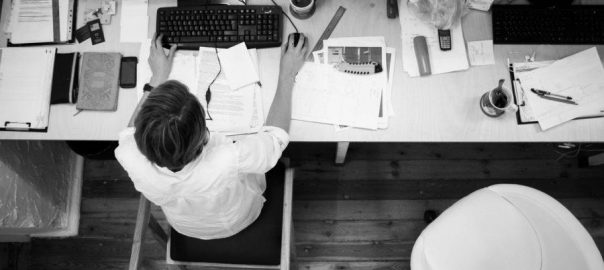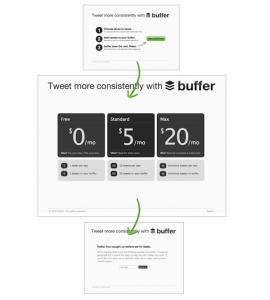An incredibly fast pace of modern technology has given us an opportunity to perform any imaginable daily tasks in just a few clicks. From electronic bank statements and online shopping to digital calendars and communication tools, there are thousands of applications that can take a headache out of our busy schedules and boost our productivity.
If you need to cut down on the number of emails, an app like Slack can help you with that. If you are looking for an easy way to share and access important files on the go, Dropbox is the perfect solution. And, if you wish to simplify your busy schedule, Doodle is just the right tool for you. Long are the days when only pen and paper were essentials of any workflow. But, is this really the case?
According to the recent study, the physical act of writing stimulates a bunch of cells called reticular activating system (RAS) which filters everything your brain is processing while giving more significance to the things you are focusing at. Consequently, it increases the likelihood of achieving your goals by 33 percent. Also, Saki Knafo at Inc. points out to the studies that show how students’ performance on tests improves when they take notes on paper instead of laptops. It proves that brain reacts differently when you use pen and paper.
While working on a computer hinders concentration and willpower, good old-fashioned pen and paper open the door to creativity. Maria Sebregondi, a co-owner of luxury notebook company Moleskine, says that paper is still a valuable medium of communication and that the annual sales of notebooks are constantly increasing. Interestingly, graphical interfaces in computers have always resembled their real-life counterparts (desktops, trash cans, calendars). Even Steven Jobs himself had long insisted on so-called skeuomorphic design.
The question lingers: What’s the secret of staying seamlessly productive in today’s world market? Should we stick to the digital world of ever-increasing applications and electronic devices or should we rely on the powerful productivity tools like pen and paper?
To do this, we need to address the real benefits of both techniques and consider all the things we can achieve by using them.
Working in a creative mess:
- Improves your memory capacity – making a list of tasks you need to tackle and noting down important data allows you to filter external information and memorize things more easily. Studies show that note-taking has a positive impact on learning new foreign words.
- Fosters creativity – according to the recently carried out research, people expressed convention in a tidy room and remarkable boost of creative ideas and novelty in the messy room. This implies that brainstorming in analog fashion is much more productive when working in creative chaos than in clean spaces.
- It is ideal for initial stages of a project – It’s a no-brainer that mind mapping can help you manage your tasks easily. While there are hundreds of mind mapping tools available on the market, the use of paper for creating mind-maps is more natural and innate, especially in the initial stage of project development.
- Cuts out distractions – as much as tablets, mobile phones, and other gadgets help us maintain our stream of thoughts and efficiently perform all activities, they can also heavily disturb our workflow. Chad Hall at Todoist explains that with all the hot apps we download on daily basis, multitasking becomes an integral part of our lives. On the other hand, paper restricts us to single-tasking and helps us attain flow-state more easily.
- It’s simpler and healthier – digital systems, notebooks, and sticky notes don’t need a password, finger scanning nor charging in order to access them. They are at your hand’s reach and they do not have a keyboard or any other system you need to learn. Moreover, sitting in front of the computer or any other digital device for hours can impede your eyesight and cause major health issues such as insomnia or obesity.

Working in a digital office:
- It’s widespread – the global digital revolution has had a huge impact on a modern consumer. Widespread internet connection allows you to access your files and emails on any device regardless of the location. Also, many industries and even luxury brands had to embrace technological advances and integrate technology throughout the entire value chain in order to stay competitive on the market. Gregorio S. Navarro, a CEO of Navarro Amper & Co., explains that today’s luxury consumer is digital-savvy, time-sensitive and experience-driven and that, to many industries, engaging such a consumer is an imperative
- It minimizes search time – no matter how much information books and notebooks can hold, one can’t help noticing the power of keyword search. The incredible speed and accuracy of digital apps enable you to dig through notes, files and pictures and reach any information in a matter of seconds
- It decreases storage costs – businesses usually forget how caught up they get while performing mundane tasks instead of spending time on business development. It kills their productivity and slows down their workflow. The results of the survey carried out by UK’ YouGov show that 31 percent of respondents would be focused on business development more if they didn’t spend so much time looking for documents. Digital storage offers us a glorious benefit of tracking down any data in just a few clicks and leverages the process of file distribution
- It’s shareable – probably the biggest benefit of any digital-savvy tool is the ability to share documents with even the remotest co-workers worldwide. It helps you stay within timelines and ensure successful completion of projects while keeping both your team and clients on the same page. On the other hand, using paper would only dull the pace of collaboration as it would require all parties to be physically present at the meeting which is virtually impossible
- It’s more cost-effective – in a paperless office, you don’t need to print your documents and invest in realms of paper. Sending your documents electronically reduces the chances of misplacing or losing any important data and significantly cuts the cost.
So, it all boils down to this – with the inevitable rise of digital apps and technological tools, we are tempted into constantly upgrading our digital workflow with the aim to become ultimately productive. This makes us heavily dependent on technology. Melissa Gregg, a principal engineer at Intel says, that it is essential to restore a person’s sense of control to his day and that one shouldn’t let the applications rule his life.

Once the technology becomes distracting the productivity suffers. This is the right time to start using good old paper checklists and to-do lists. The act of writing with a pen and paper commits you to the process, it slows you down and makes you more thoughtful. You pay closer attention to the details and make more meaningful notes. In his book Getting things done, David Allen says that using pen and paper is the easiest and the most ubiquitous way to get stuff out of your head. Plus, it helps you focus your efforts on what really needs to be done.
Whatever method you are using, it’s essential to find the right balance and make them work for you. You can preserve the absolute best of both methods by merging them. This way, you will be able to capture and enjoy the benefits of both and bring your and your team’s productivity to a whole new level.
Business & Finance Articles on Business 2 Community(112)




